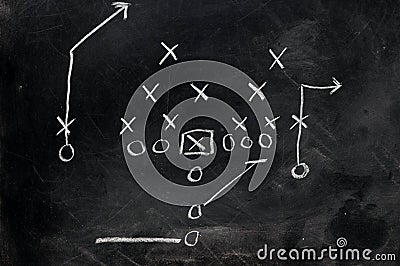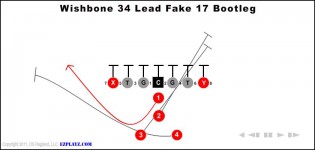

The “Me, Me” call is when the right returner is going to catch the ball “You, You” is when the left returner will catch the ball “Short, Short” is for the short kick in front of the Rattlesnake. There is some communication that is used by the returner in our case we always have the right returner make the call. The biggest reason for shifting them is to allow the returner a chance to get to the location of the ball square his shoulders and catch the ball going forward. This can be adjusted based on the kicker’s leg strength. For a directional kick team, we will place the off returner 3-yards inside of the near hash and the returner being kicked to 3-yards outside of the hash on the -5-yardline. The final two players are the returners for their alignment it will be based off of what the opponent has shown to do with their kicks. RELATED ARTICLE: The Best Weekly Special Teams Fundamental Drills To Improve Coverage They need to be physical by bringing their feet and running through contact and understand angles being the low man and playing with leverage. Another important piece for the backline is that they need to be able to listen to hear the call from the returner sprint to their assignment and be precise. They will only field a pop-over or squib kick if the returner makes a “short” call.

Just like the frontline players, once the ball is kicked and they see it is over their heads they get their eyes to the returner immediately this will allow them to get the proper direction of the kick and give them the best leverage on the cover man.Ī short kick we have them act aggressively and recover it if they can, if it is coming at them too fast we tell them to let it go and get into blocking mode to the first opposite player they see. For a deep kick, we tell them that is a ball kicked over their head and called for by the returner when they hear the returner calling for it they go into blocking mode and execute the assignment of the return that is called.
#Football diagrams x and o how to
They will use our FIT position, striking with their hands and hips, and work to sustain their block.įor the backline players we talk a lot about their return procedures, having them understand how to react to the ball being kicked as well as being able to listen to the returners behind them making the calls. The objectives for the Fullbacks & Rattlesnake players are to have great relation to the ball and their cover guy similar to an offensive blocker we want them on the ball side of their opponent. Diagram 4: Fullbacks, 4-yards on top of the numbers, ready to play a specialty kick They are aligned four yards on top of the -25-yard line. Their eyes need to be on the football to see it kicked and their hands need to be ready to react to a pop-over or squib kick. The aim point is the inside number of the jersey of the cover man, with their thumbs up and elbows in.įor the back line, the fullbacks are aligned in a two-point stance staggered in at roughly a forty-five-degree angle towards the football in a ready position. Use a FIT position and strike with their hands & hips, using a punch and at pad level.

This will allow them to redirect the cover man away from the return and finish their blocks.įor the blocking, once they have hit their drop landmark, they need to keep their feet wide and active to maintain balance and the ability to move with their target.

Finally, when they engage with the cover man, they need to absorb their target with proper leverage, making him run through the middle of their body. This will allow them to adjust the angle and depth of their drop to gain leverage based on where the ball is kicked. To do this once they see the ball kicked, they get their eyes right to the returner to better understand where the ball is going. They need to understand the distance & direction that the ball is kicked. The first thing that the front line must do is see the ball kicked, if they were to leave beforehand that could give the kickoff team an advantage and potential surprise onside attempt.


 0 kommentar(er)
0 kommentar(er)
